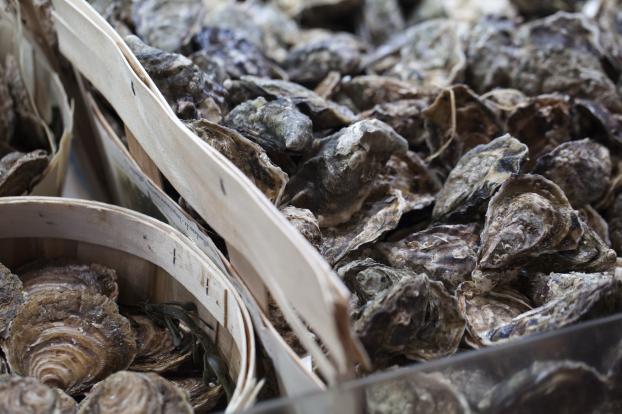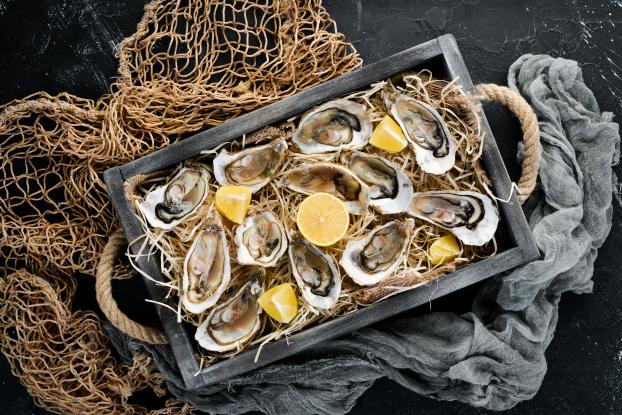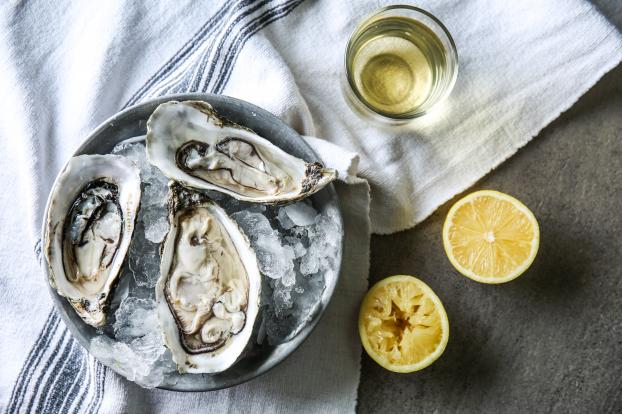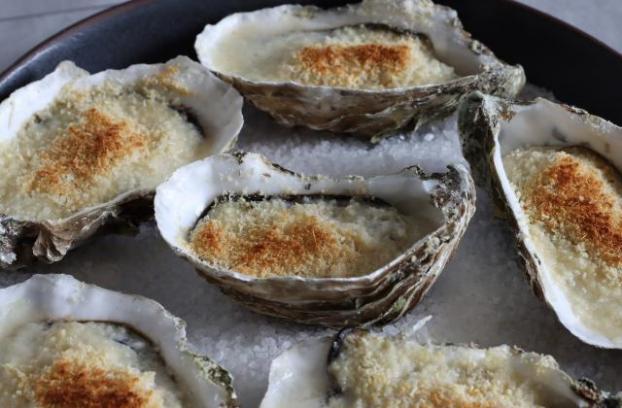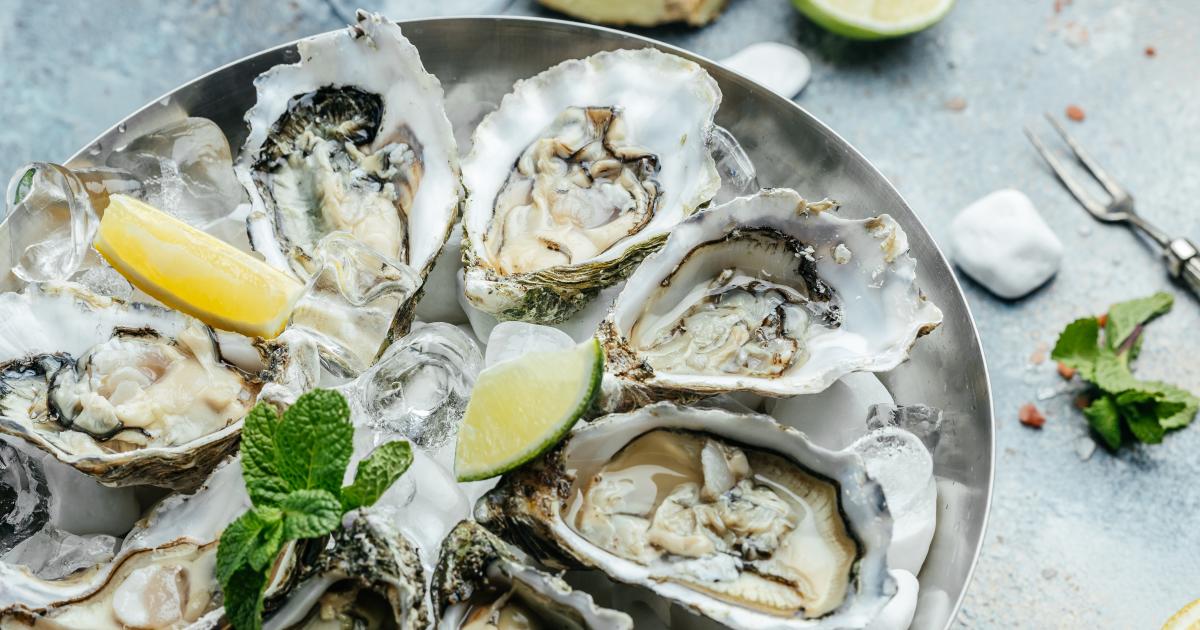
Suggested video 12 recipe ideas to prepare in September!
Video 1 of 3
How to choose your oysters

Adobe Stock
The first criterion is freshness. To be on the safe side, opt for a basket of oysters and remember to check the shipping date on the label? A basket can be kept for a week in the fridge, respecting the cold chain.
Oysters should be heavy and tightly closed, and have a good iodine smell. If they sound hollow when you knock them together, it’s not a good sign. The same goes for if they open too easily or if, when you open them, they lack water.
How to find your way around oyster sizes, varieties and labels?
The caliber of the oyster is a number that goes from 0 to 6. The higher the number, the smaller the size. This means that oysters #0 are the largest (they weigh more than 150 g) and that oysters #6 weigh little more than 20 g. It’s up to you to choose according to whether you like your oysters more or less fleshy but also according to their use. If you want to prepare oysters au gratin, it is better to take very fleshy oysters, i.e. with a small number.
You will find two oyster varieties at the fishmongers: the flat or belon oyster and the hollow oyster. The flat oyster has tender flesh with quite pronounced flavors. The hollow oyster is the most consumed in France and is less expensive than the flat oyster. It’s up to you to taste different varieties to determine which ones you prefer. Each to their own!
Oysters from the Marennes-Oléron basin benefit from official labels (IGP and Label Rouge) which guarantee their origin and quality. For example, there are the “Fines de claire”, the “speciales de claire” and the “pouches en claire” which are refined in shallow basins. They are particularly fine and tasty.
Please note, this does not mean that oysters without a label are not of good quality, it is up to you to find the oyster you like, more or less fleshy, more or less typical and more or less iodized than that found in the seven French oyster basins (Normandy, North Brittany, South Brittany, Vendée, Charente-Maritime, Arcachon, Mediterranean).
Don’t hesitate to buy your oysters directly from oyster farmers. If you don’t live in regions that have ponds, you can buy them directly on the Pourdebon platform which offers delicious oysters for sale direct.
How to open oysters?
Opening an oyster is a technical gesture that requires mastery and can be dangerous. It is estimated that there are around 2,000 accidents related to the opening of these shellfish each year!
To do this, you’ll need a knife designed specifically for the job and a thick towel to protect your hand. Start by wrapping the oyster in the towel, with the rounded side down. Carefully insert the blade of the knife into the space at the hinge of the oyster, near the tip. Using a gentle twisting motion, apply pressure to force the shell open. Once the shell is open, slide the blade of the knife under the oyster to cut the muscle that connects it to the shell. Your oyster is ready to serve.
The ideal is to open them shortly before consuming them.
Start by washing your oysters in very cold water but without soaking them. To avoid any risk, place your oyster on a clean cloth so that it is mostly wrapped in the cloth. Then slide the blade of your oyster knife into the hinge, between the two shells at the base of the oyster. Pivot your blade from right to left. When a small “clap” is heard, the oyster is open.
Remove the top shell, possibly cut the nerve, drain the water and check that there are no shell residues or other impurities.
Gradually place your shells on a platter and serve them.
Trick : to wedge them, we like to add a bed of coarse salt or ice on the serving tray.
What to eat oysters with?
Purists will enjoy the oysters plain, but they are delicious served with a dash of lemon juice or a mixture of vinegar and shallots, as is offered in brasseries or seafood restaurants. We also can’t resist buttered rye bread, which goes so well with the salty flavors of the oysters.
Which wine to taste with oysters?
Traditionally, oysters are accompanied by a dry white wine, particularly a Muscadet, whose pairing with oysters is no longer in doubt. You can also opt for other dry white wines from the Loire region, such as a Quincy or a Menetou-Salon, but also wines made from the Chardonnay grape variety, such as a Chablis.
How many oysters per person?
The number of oysters to plan depends on the type of meal and the appetite of your guests. In general, for a starter, six to eight oysters per person are enough. If oysters are served as a main course, plan on a dozen per person. Of course, for big fans, it is possible to offer a larger quantity, according to the desires and tastes of each person. It is important to adapt the portions according to the other dishes that make up the meal, especially during parties where oysters are only one of the many delicacies offered.
How to preserve your oysters?
Storing oysters is essential to preserve their freshness and avoid any health risks. It is recommended to store them between 5 and 10 degrees, in the vegetable drawer of your refrigerator. If you buy them in a basket, you can keep them as they are, always taking care to place the rounded side underneath. This way, they can be kept for up to a week after purchase. Once opened, it is best to consume them quickly. However, you can keep them in their juice, in a cool place, for a maximum of 24 hours. On the other hand, freezing should be avoided, as it alters their texture.
Our best oyster recipes
While connoisseur purists swear by raw oysters with a little lemon juice or a mixture of vinegar and shallot, others much prefer oysters au gratin, breaded oysters or poached oysters.
Oysters au gratin are simply oysters that have been opened and drained of their water, covered with breadcrumbs, herbs and possibly cheese before being placed under the grill for 2 minutes, or even 3, but no more. This gives an oyster that keeps its character and makes a lovely starter or appetizer for the holidays.
See our recipe for oysters au gratin.
Breaded oysters are raw oysters that are breaded (they are coated in flour, then in beaten egg and finally in breadcrumbs) before being fried for a very short time in oil or frying oil. This gives a nice contrast between the golden crust and the salty side of the oyster. These breaded oysters are perfect for nibbling on as an aperitif or serving in a salad as a Christmas starter.
You can add herbes de Provence to the breadcrumbs as in these oysters breaded with herbes de Provence or replace half of the breadcrumbs with roasted hazelnut powder, as in this recipe for oysters in a hazelnut crust.
Poached oysters are another way to prepare hot oysters. They make a very nice holiday starter.
See all our hot oyster recipes with videos to guide you.
Related recipes
Hot oysters in olive oil
An explosive marriage! Certainly, but ultimately ideal. A mixture of land and sea with the “woody” side and the roundness of the oil…
Baked oysters au gratin
Seafood lovers, and especially oyster lovers, you will love this recipe. First of all, it is original because instead of eating your…
Oysters with Aquitaine flavors
A land and sea blend combining Ferret Oysters and Bayonne ham.
How do you know if an oyster is fresh?
Eating fresh oysters is essential to ensure an optimal taste experience, but also for food safety reasons. A fresh oyster has a slight, pleasant marine odor, while a strong or unpleasant odor is a warning sign. Visually, the oyster should be shiny and moist. If it appears dried out or dull, this indicates that it is no longer fresh. When opened, an oyster should contain enough juice. If it is dry, it is better not to eat it. Finally, a simple test with a fork can be used to check freshness: if the oyster shrinks slightly upon contact, it is still alive and ready to be eaten. When in doubt, it is always better to throw away an oyster rather than risk poisoning.
Source:https://www.750g.com/le-guide-pour-bien-choisir-et-preparer-ses-huitres-a30431.htm

